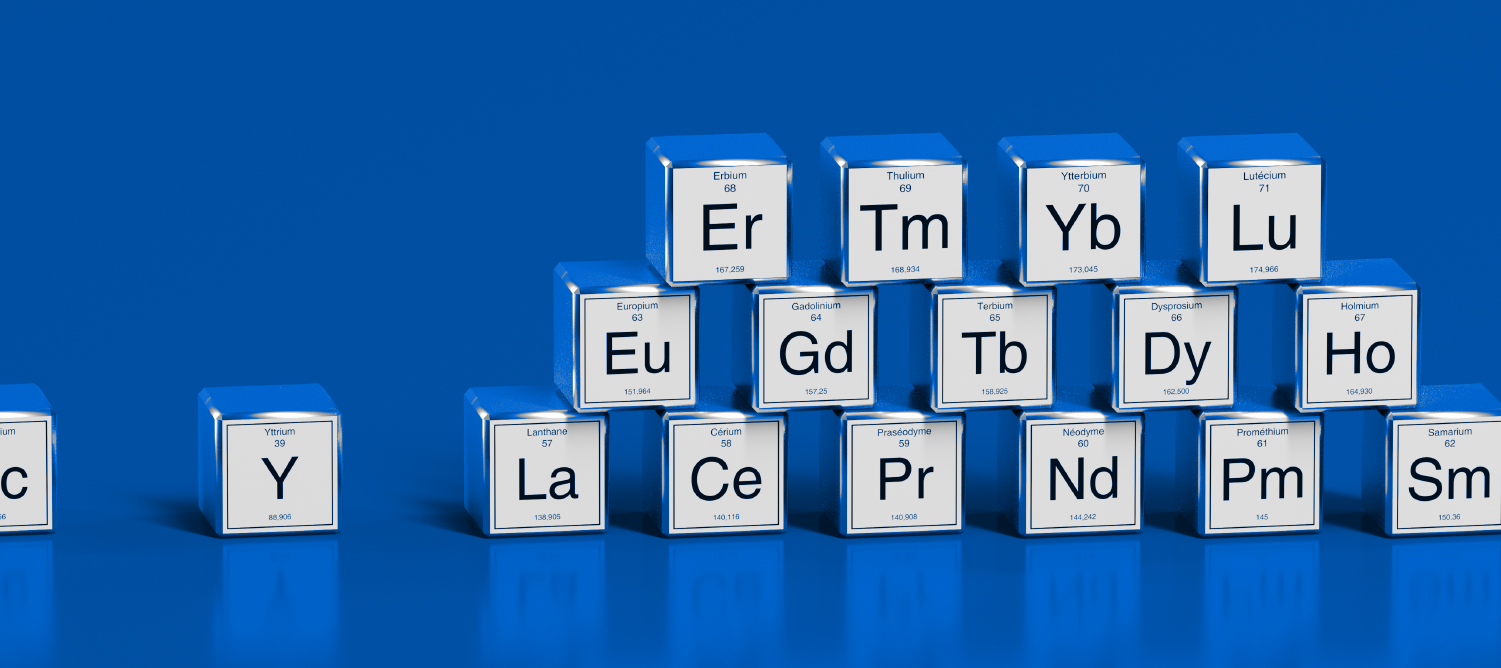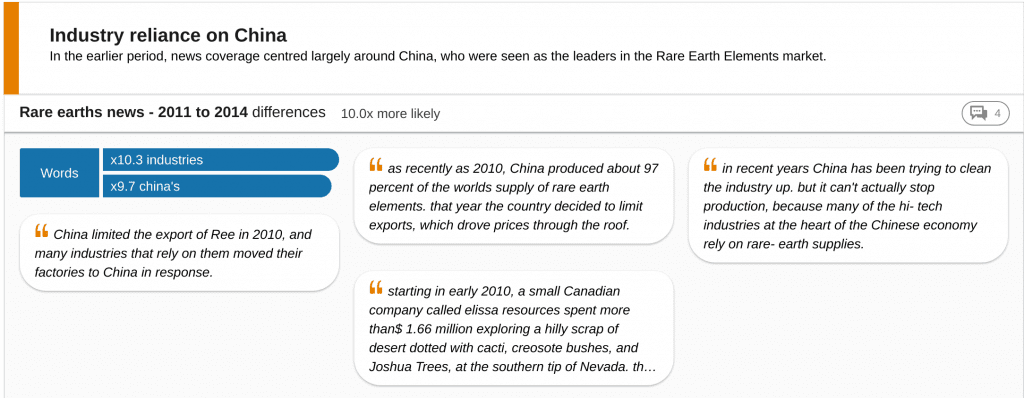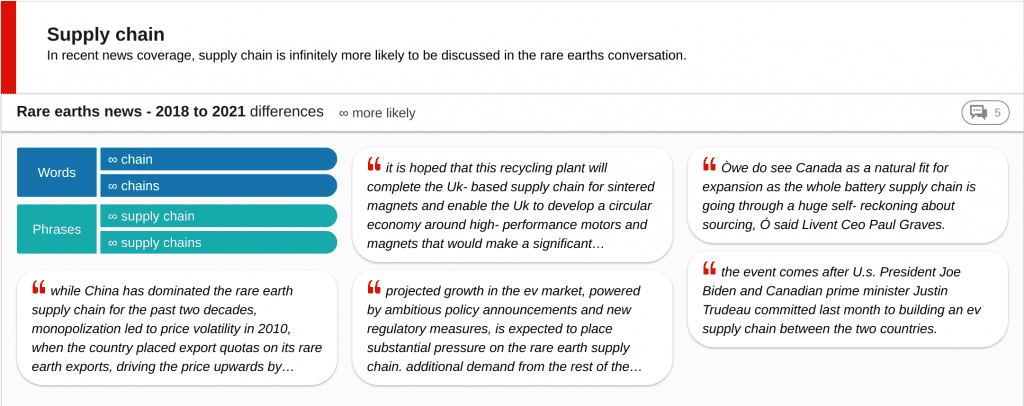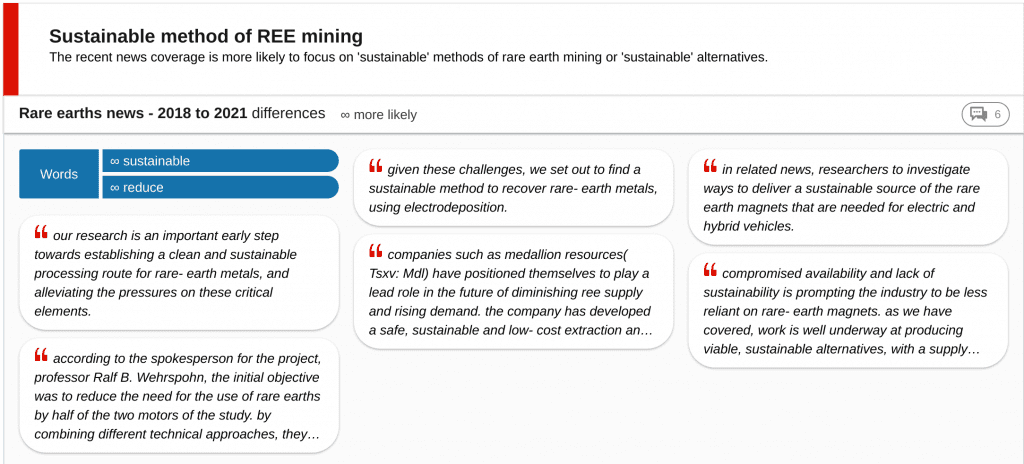Understanding the geopolitics of rare earth metals

Chances are you’re unfamiliar with the phrase “rare earths”. Yet, rare earth elements (REE) such as dysprosium, neodymium and praseodymium are a vital component of the green energy transition. Used in the manufacturing of wind turbines, electric cars, solar panels and batteries, rare earth metals are essential for paving a sustainable future.
Despite their critical role in the sustainability economy, mining rare earth metals proves controversial. There are increasing fears regarding the scarcity of rare earths, challenges with recycling and concerns around their environmental impact – an issue that is currently interfering with the EU’s plans to secure rare earths from Greenland.
Using comparison as a means of analysis
To better understand the growth and evolving attitudes towards rare earths, we analysed global news coverage of the topic over the past ten years. Analysing news media is an important resource for tracking public perceptions on topics that there aren’t dominant in everyday discourse.
To do this, we first collected a sample of news articles around the topic of rare earths. Next, we uploaded this language data to Relative Insight, a text analysis platform which utilizes the power of comparison to uncover unique insights.
We then split this data into two timeframes and compared news articles from 2011 – 2014 against 2018 – 2021 to understand how the media conversation has changed.
News coverage: 2011 to 2014
Most of the world’s rare earth minerals are located in China, where an estimated 44 million metric tons can be found in the Earth’s crust. The geopolitics of rare earth elements is evident in media coverage between 2011 and 2014, which focused heavily on China’s disproportionate control over REE resources and trade.
The words China and industries appeared 10x more in news articles during this period, highlighting the media’s concern with the global supply chain reliance on China. This could be due to the fact that in 2010, China’s monopolisation of rare earths led to price volatility and caused trading partners to question “what dependence on one supplier of rare earths might mean in the high-tech race,” as suggested by professor Sophia Kalantzakos.

Compared to the latter period, journalists were 2.3x more likely to discuss the challenges and difficulties of recycling rare earth metals between 2011 and 2014. Despite the clear benefits of using rare earths in electric vehicles and renewable energy tech, this suggests that there were early concerns regarding the sustainability of REEs.

News coverage: 2018 to 2021
The emergence of electric and hybrid vehicles has spurred demand for rare earths across the globe. Our analysis found that articles from 2018 to 2021 are infinitely more likely to use words such as sales and sold when referring to rare earth metals and electric vehicles, showing how news outlets have closely followed this industry expansion over time.
A key insight we discovered was that the media is more likely to focus on the politics surrounding rare earths during this period, with the topic Government appearing 2.8x more. News articles mentioned individual countries such as US, UK, Australia and Canada who are attempting to find their own supply of REEs, instead of relying on major exporters such as China.

In a similar vein, there was increased discussion regarding the supply chain of rare earths, a phrase that was completely absent in the earlier news articles. Although China still provides 85% of the world’s rare earths, it now seems that there is a requirement for a much simpler supply chain. Albeit, one which can operate without heavy dependence on a single country, and can continue to support the growth in the EV and renewables market.

Interestingly, the word sustainable also appeared infinitely more in this data set. This clearly shows how people now think about rare earths through the lens of sustainability. While rare earth metals are a vital component to the technologies driving the green revolution, there is an increased awareness that they also come with their own consequences. The media highlights that rare earths are not a perfect solution, and sustainability considerations must be made should we wish to avoid a situation in which REEs become the new fossil fuels.

Why does this matter?
Time comparisons enable us to see exactly how a conversation has evolved, whether that be in the news, social media or through another medium. In this case, the conversation on rare earths has now become inextricably linked to the increasing popularity of electric cars. But what’s most fascinating is that the words supply chain and sustainable appear to be anchored in the present-day vernacular. While rare earths are essential to a green future, there still must be policies in place to ensure the sustainable use of these materials.
Don’t miss our next Spotlight Series webinar that explores the constantly shifting discourse around sustainability. Featuring special guests and speakers, we will investigate why using the right words is paramount when it comes to sustainability.

